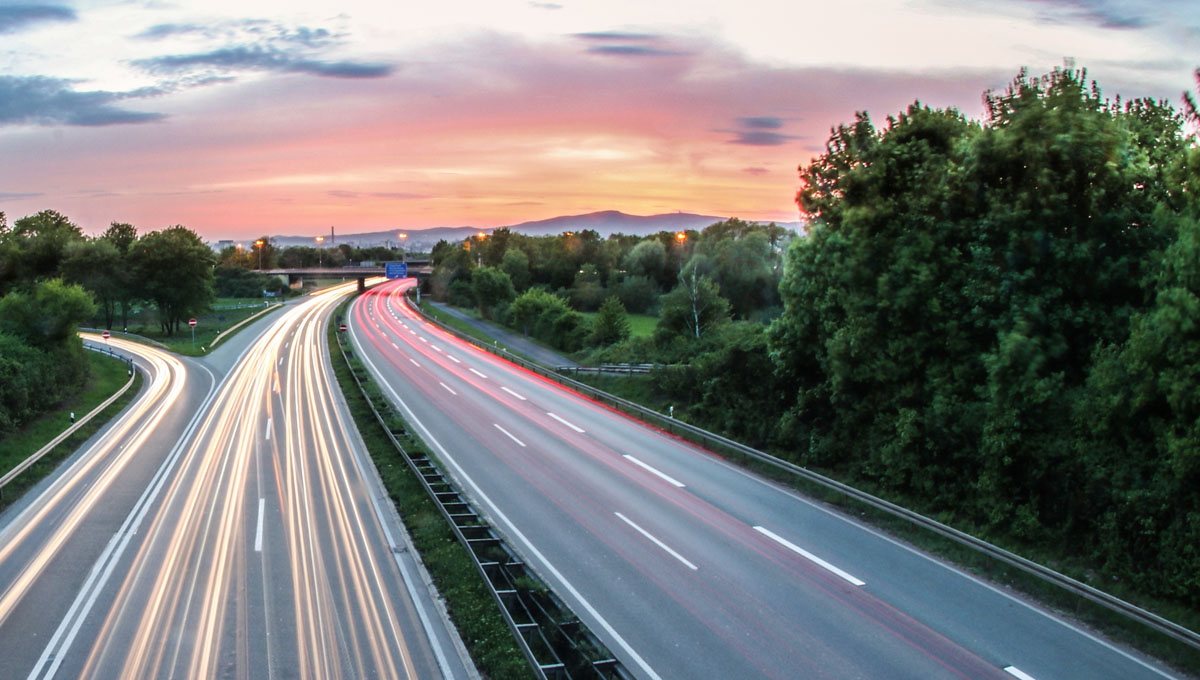Please click here to download the Newsletter as PDF.
January – March 2023
Key Initiatives under Union Budget 2023-24
Transportation sector continues to be a priority sector under the Union Budget for the financial year 2023-24 (“Budget”), announced on February 1, 2023, with a financial allocation of INR 5.17 lakh crore (Indian Rupees five point seventeen lakh crore). The roads sector was allocated an amount of approximately INR 2.7 lakh crore (Indian Rupees two point seven lakh crore).
The Budget also announced support for the recently announced National Green Hydrogen Mission and all its components. One such component of the Mission is the designation of certain highways as ‘Hydrogen Highways’ where hydrogen distribution infrastructure and refueling stations will be built to allow hydrogen fueled buses and commercial vehicles to ply on such highways.
Some of the other noteworthy announcements in the Budget for the sector are as follows:
- Scrapping of old vehicles would be a key part of the green initiatives in the transportation sector and additional funding would be provided in this regard.
- To provide impetus to green mobility, capital goods and machinery required for manufacture of lithium-ion cells for batteries used in electric vehicles was exempted from customs duty.
- To support ethanol blending programme and facilitate energy transition, basic customs duty on denatured ethyl alcohol was exempted.
- A newly established Infrastructure Finance Secretariat has been tasked with assisting stakeholders for more private investment in infrastructure (including railways, roads, urban infrastructure, etc.), which predominantly depend on public resources.
Source: Union Budget 2023-24 Speech
Economic Survey 2022-23 provides a positive outlook on investment in the transport sector
The Union Economic Survey for FY 2022-23 published on January 31, 2023 (the “Survey”), highlighted the critical role played by infrastructure in economic growth, observing that investing in high-quality infrastructure is crucial for accelerating and sustaining economic growth as it has a salutary effect on the productivity and efficiency of manufacturing.
In terms of the transportation sector, some of the positive trends from the Survey are as follows:
- The Survey demonstrates year on year increase in budgetary support to the roads and highways sector. During the last 4 (four) years the government budgetary support increased from INR 0.8 lakh crore (Indian Rupees zero point eight lakh crore) in the financial year 2018-2019 to approximately INR 1.4 lakh crore (Indian Rupees one point four lakh crore) during financial year 2022- 23 (as of October 31, 2022). During the period 2015-16 to 2022-23, the budgetary support from the Government of India has remained unwavering even though during this time, the private sector investment has stagnated.
- The roads & highways sector has seen accelerated construction of national highways and roads during financial year 2021-22. As an example of increased activity, as compared to construction of 6,061 (six thousand sixty one) kilometers during financial year 2015-16, in the financial year 2021-22 approximately 10,457 (ten thousand four hundred fifty seven) kilometers of roads and national highways was constructed. In relation to financial year 2022-23, approximately 4,060 (four thousand sixty) kilometers of national highways and roads were constructed until October 2022. This is approximately around 91% of the roads and national highways which were constructed in the corresponding period of the previous financial year i.e., 2021-22.
- There seems to be reemphasis on increase in the private investment and the public private partnership (“PPP”) route remains a key method through which private sector investment can be channelized for infrastructure creation. The Survey highlights PPPs in all infrastructure sectors, including the roadways sector, will be successful if there is an institutional structure, financial support available and there is use and availability of standardized documents, such as model Request for Qualification (“RFQ”), model Request for Proposal (“RFP”) and model concession agreements.
- As drivers towards expediting PPP projects, the Public Private Partnership Appraisal Committee (“PPPAC”), the apex body for appraisal of PPP projects of the Government of India has streamlined its appraisal mechanism to ensure speedy appraisal of projects, eliminate delays, adopt international best practices, and have uniformity in appraisal mechanism and guidelines. As a result of these reforms, PPPAC has cleared 79 (seventy nine) projects with a total project cost of INR 22,72,68,10,00,000 (Indian Rupees two lakh twenty-seven thousand two hundred sixty-eight crore ten lakh) from financial year 2015-16 to 2022-23 in various sectors with around 13 (thirteen) projects being approved in the roads sector between April 2015 to August 2021.
Source: Economic Survey 2022-23, Chapter 12.
Amendment to the standard RFP for BOT (Toll) and HAM Projects
On March 31, 2023, the Ministry of Road Transport and Highways (“MoRTH”), Government of India notified certain amendments to the standard RFP document for build-operate-transfer (“BOT”) (Toll) and hybrid annuity model (“HAM”) projects in the roads sector. These amendments were mostly in relation to the eligibility criteria and have been summarised below:
- HAM projects:
- The definition of eligible projects for the purpose of technical qualification of the bidders now includes projects related to widening/ reconstruction/upgradation works on national highway/state highway/expressway or on any category of roads taken up under Central Road Fund Scheme, Economic Importance/ Inter State Connectivity Scheme, Special Accelerated Road Development Programme, program for development of roads Left Wing Extremism affected areas; widening/ reconstruction/up-gradation works on major district roads with loan assistance from multilateral agencies or on BOT basis; widening/ reconstruction, up-gradation works on roads in Municipal Corporation limits, construction of bypasses; construction of standalone bridges, road overbridges, tunnels; and construction/reconstruction of linear projects like airport runways, railways (construction/re-construction of railway tracks, yards for keeping containers etc.) metro rail and ports (including construction / reconstruction of jetties).
- The definition of ‘highways sector’ in the standard RFP has been expanded. Earlier the RFP stated that highway sector included highways, expressways, bridges, tunnels and airfields. The new definition of ‘highways sector’ will, in addition to the above, also include runways, railways(construction/re-construction of railway tracks, yards for keeping containers etc.) metro rail and ports (including construction/reconstruction cost of Jetties or any other linear infrastructure including bridges, etc.);
- The definition of core sector under the standard RFP has been expanded to take into consideration projects with the title of Rural Infrastructure Development Fund, Pradhan Mantri Gram Sadak Yojana, road, link road, city roads, rural road, sector/ municipality road, real estate projects which demonstrate road development/ construction of bridges or culverts. However, railways and metro rail has been excluded from the meaning of ‘core sector’.
- BOT (Toll): The eligibility criteria for projects under this model has been revised whereby different eligibility criteria has been prescribed for normal highway projects (including major bridges/ROB/flyovers/tunnels) on one hand and for standalone specialized projects.
The details of the changes proposed by the amendment can be viewed here.
Proposal to extend the time for automated testing of vehicle fitness
The MoRTH on March 29, 2023 issued a notification proposing to extend the deadline from April 1, 2023 to April 1, 2024 for adoption of mandatory testing of vehicle fitness through automated testing stations . This deadline extension is in relation to heavy goods vehicles and heavy passenger motor vehicles.
Source: Gazette Notification
NHAI looking to invite bids for development of wayside amenities
On March 2, 2023 it was announced that National Highways Authority of India (“NHAI”) will look to develop 600 (six hundred) wayside amenities by the end of financial year 2024-25 along the stretches of national highway.
The amenities proposed to be provided to the commuters would include, fuel station, electric vehicle charging facilities, food court, retail stores, ATMs, vehicle repair facilities, etc. It is proposed that 150 (one hundred and fifty) wayside amenities will be tendered out during financial year 2023-24, and the highway stretches will include corridors like Amritsar-Bathinda-Jamnagar Corridor, Delhi – Mumbai Expressway and Delhi-Amritsar-Katra Expressway.
Source: PIB
Hindustan Construction Company closes its sale of Baharampore- Farakka Highways
On March 29, 2023, it was announced by Hindustan Construction Company (“HCC”) that it had closed the sale of its special purpose vehicle, Baharampore-Farakka Highways Limited (“BFHL”), to Cube Highways and Infrastructure V Pte Ltd (“Cube”).
As part of the transaction, HCC will receive a total of INR 941,00,00,000 (Indian Rupees nine hundred and forty one crore) which includes upfront amount of INR 677,00,00,000 (Indian Rupees six hundred and seventy seven crore) and INR 264,00,00,000 (Indian Rupees two hundred and sixty four crore) which will be payable by the third quarter of FY 2023-24 and first quarter of FY 2024-25 in 2 (two) tranches. Additionally, as part of the agreement with Cube, HCC will be entitled to a revenue share from BFHL over the entire concession period.
Source: Press Release- HCC
NHAI makes it mandatory to use plastic waste for construction of service roads along national highways
As part of the increasing number of green initiatives in the transportation sector, the MoRTH on February 6, 2023 announced through a circular that going forward it would be mandatory to use plastic waste as part of the wearing coat for service roads and slip roads along all national highways. This would be in addition to plastic waste being used in the periodical renewal coat used for main carriageway which are within 50 (fifty) kms periphery of urban area having a population of more than 5,00,000 (five lakhs).
Source: Circular dated February 6, 2023
Use of phosphor-gypsum in construction of national highways
The NHAI announced on February 22, 2023 that it would be looking to collaborate with the Department of Fertilizers, Ministry of Chemicals & Fertilizers, to explore the feasibility of using phosphor-gypsum while constructing national highways.
As per the announcement, an Indian fertilizer company has constructed a road using phosphor-gypsum and the road was evaluated by Central Road Research Institute (“CRRI”) and based the evaluation, the Indian Road Congress has accredited neutralized phosphor-gypsum waste material for road construction for a period of 3 (three) years.
The fertilizer company and CRRI have been asked to take up field trials on an NHAI project to evaluate performance of phosphor-gypsum on national highways.
Source: PIB
NHAI awards the concession for toll, operate and transfer – Bundle 9
As part of the efforts to monetize the assets in various infrastructure sectors, including the roadways sector, the NHAI, on January 24, 2023, awarded the concession for the 6 (six)-lane stretch of Handia-Rajatlab Section of NH-19 (Bundle 9) under toll, operate and transfer (“TOT”) model. The concession was awarded to National Investment and Infrastructure Fund pursuant to an international competitive bidding process for an amount of INR 3,144,00,00,000 (Indian Rupees three thousand one hundred forty four crore).
Shri Nitin Gadkari chairs 10th meeting of Group of Infrastructure Committee
On January 24, 2023, the Minister for Road Transport & Highways, Shri Nitin Gadkari chaired the 10th (tenth) meeting of the Group of Infrastructure Committee. The agenda of the meeting was to discuss various inter-ministerial issues delaying the implementation of various infrastructure projects. The meeting was also attended by Shri Piyush Goyal, Union Minister for Commerce and Industry; Shri Ashwini Vaishnaw, Union Minister for Railways, Communications, Electronics and Information Technology; Shri Bhupender Yadav, Union Minister for Minister of Environment, Forest & Climate Change, and Labour & Employment; Gen (Dr.) V. K. Singh (Retd.), Minister of State for RT&H & Civil Aviation as well as senior officials from Ministry of Civil Aviation (MoCA), NHAI and National Highways and Infrastructure Development Corporation Ltd. (NHIDCL).
During the meeting, the focus was on expediting the progress of on-going infrastructure projects. These included issues related to pending forest and environment clearances, facilitation of working permissions/approvals, ensuring land allocation/transfer and release of funds. As part of streamlining the process, preparing a comprehensive set of guidelines for environment and forest clearance was discussed.
Source: PIB
Report on Assessment of Avoided CO2 Emissions during Construction and Operation of National Highways released
The Minister for Environment, Forest and Climate Change Shri Bhupender Yadav, on February 22, 2023 released a report titled “Assessment of Avoided CO2 Emissions during Construction and Operation of National Highways”. The report assesses the extent of carbon dioxide (“CO2”) which can be avoided per km of construction of national highways. Some of the key steps suggested by the report, going forward, to reduce the CO2 emissions arising from development of highways are as follows:
- In order to continuously enhance avoidance of CO2 emissions from highway construction, the report suggests developing decision-tree based standard operating procedures that would ensure integration of the best green technologies in the entire cycle of national highway construction, operation and maintenance. The use of affordable green technologies such as green road materials for roads and sidewalks, green fuel for construction, better practices of highway maintenance, and local climate specific plantations amongst others can be continuously evaluated and integrated.
- The report recommends that resource efficiency, including optimization of pavement design, reducing lead distance of material sources, use of local and recycled materials etc., can lead to a reduction in emissions arising from the highways sector. The report suggests that prior to using any technology for road construction, a comparative assessment study of the alternative technologies and materials has to be conducted to ascertain the amount of greenhouse gas emissions from usage of such technology.
- The report states that its limitation is that the estimation of fuel consumption on different sections of highways has been done with limited data and certain logical assumptions. These limitations can be overcome by conducting studies on a large number of highway sections in order to develop a generalized methodology for fuel consumption estimations on national highways.
- The report highlights the fact that the assessment of afforestation initiatives have been entirely based on proposed plantation data as indicated in the Environmental Impact Assessment and Project Design documents of highway stretches. The report has also been prepared assuming uniform growth rate of trees across all the highway stretches. In reality, growth rates vary from tree species and across regions. Further, there are data documentation gaps in some stretches, such as the number and species of trees that were felled and are proposed to be planted. The Environmental Impact Assessment and Project Design documents do not have complete information on the total number of median trees/bushes planted, girth of trees felled by species and does not report the status of soil carbon in forest area lost. No post-plantation monitoring data is available that can provide actual growth rates and survivals or status of soil organic carbon.
Considering the above, it is important that systematic documentation of data for the above points is ensured and access to all plantation information is made available for replantation as and when required. The availability of data will capture the species-wise regional diversity in growth rates, and survival rates of the trees planted and, as a loss will give an accurate assessment of the extent of carbon loss due to the felling of forest areas, carbon sequestration due to different avenue tree and median tree species planted and carbon sequestration due to compensatory afforestation.
The full report can be accessed here.
This Newsletter has been prepared by:
|
Vishnu Sudarsan |

Ashish Suman |

Kartikeya GS |
Ayan Sinha |














